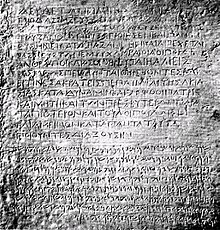Transmission of Buddhism

The transmission of Buddhism to China via the Silk Road began in the 1st century CE, according to a semi-legendary account of an ambassador sent to the West by the Chinese Emperor Ming (58–75). During this period Buddhism began to spread throughout Southeast, East, and Central Asia. Mahayana, Theravada, and Tibetan Buddhism are the three primary forms of Buddhism that spread across Asia via the Silk Road.
The Buddhist movement was the first large-scale missionary movement in the history of world religions. Chinese missionaries were able to assimilate Buddhism, to an extent, to native Chinese Daoists, which brought the two beliefs together. Buddha’s community of followers, the Sangha, consisted of male and female monks and laity. These people moved through India and beyond to spread the ideas of Buddha. As the number of members within the Sangha increased, it became costly so that only the larger cities were able to afford having the Buddha and his disciples visit. It is believed that under the control of the Kushans, Buddhism was spread to China and other parts of Asia from the middle of the first century to the middle of the third century. Extensive contacts started in the 2nd century, probably as a consequence of the expansion of the Kushan empire into the Chinese territory of the Tarim Basin, due to the missionary efforts of a great number of Buddhist monks to Chinese lands. The first missionaries and translators of Buddhists scriptures into Chinese were either Parthian, Kushan, Sogdian, or Kuchean.
One result of the spread of Buddhism along the Silk Road was displacement and conflict. The Greek Seleucids were exiled to Iran and Central Asia because of a new Iranian dynasty called the Parthians at the beginning of the 2nd century BCE, and as a result the Parthians became the new middle men for trade in a period when the Romans were major customers for silk. Parthian scholars were involved in one of the first ever Buddhist text translations into the Chinese language. Its main trade centre on the Silk Road, the city of Merv, in due course and with the coming of age of Buddhism in China, became a major Buddhist centre by the middle of the 2nd century. Knowledge among people on the silk roads also increased when Emperor Ashoka of the Maurya dynasty (268–239 BCE) converted to Buddhism and raised the religion to official status in his northern Indian empire.
From the 4th century CE onward, Chinese pilgrims also started to travel on the Silk Road to India to get improved access to the original Buddhist scriptures, with Fa-hsien‘s pilgrimage to India (395–414), and later Xuanzang (629–644) and Hyecho, who traveled from Korea to India. The travels of the priest Xuanzang were fictionalized in the 16th century in a fantasy adventure novel called Journey to the West, which told of trials with demons and the aid given by various disciples on the journey.

There were many different schools of Buddhism travelling on the Silk Road. The Dharmaguptakas and the Sarvastivadins were two of the major Nikaya schools. These were both eventually displaced by the Mahayana, also known as “Great Vehicle”. This movement of Buddhism first gained influence in the Khotan region. The Mahayana, which was more of a “pan-Buddhist movement” than a school of Buddhism, appears to have begun in northwestern India or Central Asia. It formed during the 1st century BCE and was small at first, and the origins of this “Greater Vehicle” are not fully clear. Some Mahayana scripts were found in northern Pakistan, but the main texts are still believed to have been composed in Central Asia along the Silk Road. These different schools and movements of Buddhism were a result of the diverse and complex influences and beliefs on the Silk Road. With the rise of Mahayana Buddhism, the initial direction of Buddhist development changed. This form of Buddhism highlighted, as stated by Xinru Liu, “the elusiveness of physical reality, including material wealth.” It also stressed getting rid of material desire to a certain point; this was often difficult for followers to understand.
During the 5th and 6th centuries CE, merchants played a large role in the spread of religion, in particular Buddhism. Merchants found the moral and ethical teachings of Buddhism an appealing alternative to previous religions. As a result, merchants supported Buddhist monasteries along the Silk Road, and in return the Buddhists gave the merchants somewhere to stay as they traveled from city to city. As a result, merchants spread Buddhism to foreign encounters as they traveled. Merchants also helped to establish diaspora within the communities they encountered, and over time their cultures became based on Buddhism. As a result, these communities became centers of literacy and culture with well-organized marketplaces, lodging, and storage. The voluntary conversion of Chinese ruling elites helped the spread of Buddhism in East Asia and led Buddhism to become widespread in Chinese society. The Silk Road transmission of Buddhism essentially ended around the 7th century with the rise of Islam in Central Asia.

